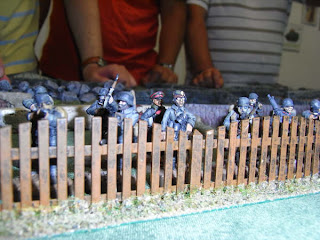
I'm about to leave for a few days of holidays and will be off-line until mid next week, but will be taking with me reading materials and a handy copy of Stouts Hearts (http://toofatlardies.co.uk/index.php?main_page=product_info&cPath=5&products_id=17). Before leaving, some thoughts on the Arras scenario and potential lines of improvement.
Analysing the outcome of the first test, I conclude that there are two major flaws in the design that unbalance the scenario on the British side: they have overwhelming firepower and no time constraints.
On the basis of these two factors, they can take whatever time is necessary to deploy their troops and make use of that fire power almost at leisure on the German forces. In order to rebalance the scenario I’m planning to introduce two changes to the scenario conditions.


